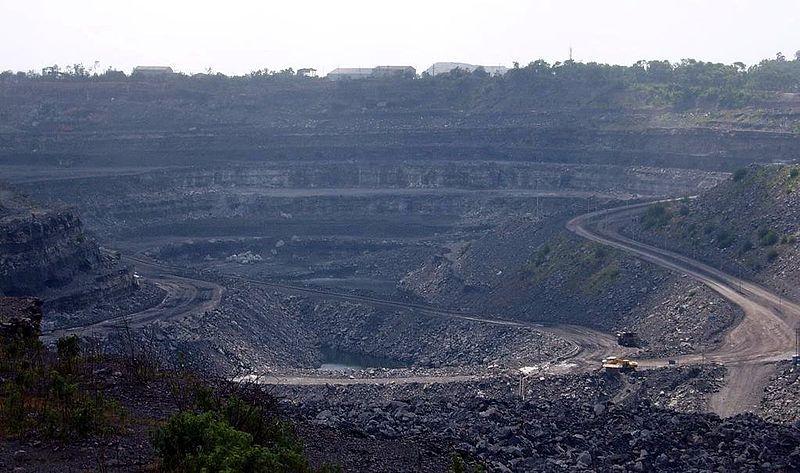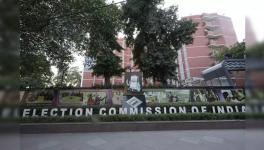Did Meghalaya Govt Misuse Environmental Cess Collected From Coal Mining?

Representational Image. Image Courtesy: Wikimedia Commons
New Delhi: The BJP-backed Conrad Sangma government of Meghalaya has allegedly bypassed orders of the National Green Tribunal in utilising environmental cess collected from the transportation of coal in the state. As per an audit report released by the Comptroller & Auditor General (CAG) of India on March 28, the Meghalaya government, which collected Rs 1,193.30 crore as cess till 2021-22, has kept the corpus in three separate accounts in different banks instead of a single current account under the control of the state’s chief secretary.
On the other hand, the state government’s Department of Mining & Geology has claimed that there has been no wrongdoing in managing and utilising the corpus named Meghalaya Environment Protection and Restoration Fund. Per the CAG’s findings, the cess is being invested in fixed deposits in two private sector banks, HDFC Bank and Axis Bank. Between the financial years 2017-18 and 2021-22, a whopping amount of Rs 1,193.30 crore was collected as cess at 10% of the market value of coal per metric ton. The closing balance of the funds was Rs 18.04 crore at the end of the financial year 2021-22.
“Non-routing of the above receipts through the Consolidated Fund results in fissures where such Revenue Receipts of the Government escapes the notice of the Legislature while not being captured in the desired manner and also will not provide a true picture of the actual revenue vis-a-vis the expenditure of the State to determine the fiscal parameters,” states the CAG report.
Notably, the massive corpus has been created from cess collected only out of transportation of coal since no leases whatsoever have been awarded by the Meghalaya government for extraction or mining of coal anywhere in the entire state. The government has claimed that the minerals that are being transported have been lying in dumps in several parts of the state ever since the green tribunal imposed a ban on illegal rat-hole coal mining in Meghalaya in December 2014.
The green tribunal issued an order upon the Meghalaya government in April 2015 to collect cess from coal transportation, over and above royalties, to use the corpus created for restitution of the environment and rehabilitation of communities affected by illegal mining.
“ … we direct that the State Government shall, in addition to the royalty payable to it, also collect 10% of the said market value of the coal per metric tonne from each person. The amount so collected shall be deposited in the account to be titled ‘Meghalaya Environment Protection and Restoration Fund’ to be maintained by the State under the direct control of the Chief Secretary of the State of Meghalaya. This amount shall only be used for the restoration of the environment and necessary remedial and preventive measures in regard to the environment and matters related thereto,” the principal bench of the tribunal, headed by its then Chairperson Justice Swatanter Kumar, had directed.
The administration of the corpus is being discharged by the Directorate of Mineral Resources of Meghalaya under the state’s mining and geology department. The CAG has said in its audit report that the corpus is being maintained in three banks – the State Bank of India, the HDFC and the Axis Bank.
Following the green tribunal’s orders, the Meghalaya government also issued a set of detailed guidelines for the utilisation of the cess collected from coal transportation. The guidelines outlined the formation of numerous committees to ensure that the cess collected is utilised only for environmental restitution and rehabilitation of mining-affected communities.
“The State Government shall notify institutional mechanism consisting of District Level Executing Committees, Technical Committee, Steering Committee and Monitoring Group to ensure utilisation of MEPRF [the cess fund] in an efficient, effective and transparent manner for restoration of the environment in areas affected by coal mining in the State and for necessary remedial and preventive measures with regard to the environment and matters related thereto including rehabilitation of persons affected by coal mining,” the guidelines dated August 20, 2020, stated.
These guidelines contain a provision as per which “a portion of interest received from the Funds invested in fixed deposits, with the prior approval of the Chairman of the NGT Committee, may be used for paying wages or remuneration” of contractual appointees and non-official members who undertake various functions to implement the directions of the green tribunal.
Notably, the “NGT Committee”, mentioned in the guidelines, had been constituted by the green tribunal in August 2018 to prepare a time-bound action plan for the restoration of the environment and rehabilitation of victims of illegal mining.
“The funds have been utilised exactly in accordance with the directions of the green tribunal and the guidelines stipulated by the state government. No money, whatsoever, can be released from the corpus without the approval of an Oversight Committee that has been constituted by the green tribunal to monitor the utilisation of the cess. A single current account in a bank would not have generated any interest on the corpus of cess. In order to meet expenses, a portion of the funds has been invested in instruments like fixed deposits,” said a senior official of the mining and geology department.
The state government has also reportedly transferred sums of money to the Central Pollution Control Board in the past for environmental restitution of mining-affected areas in Meghalaya. Though the official pointed out that many projects and programmes have been undertaken with the help of the funds collected, the details thereof were not available immediately. Nonetheless, questions have been raised about why the Meghalaya government has not audited the fund to date, even though most of it has been exhausted.
“The government is bound to conduct an audit of the funds since the revenues collected in the form of cess belong to the citizens of the state. It has to be examined under what heads funds have been released in the past. Further, it needs to be ascertained whether the funds have been rightly utilised for the purpose it has been released,” retired judge of Gauhati High Court, Justice Brojendra Prasad Katakey, told NewsClick.
In reports submitted to the green tribunal and, subsequently, to the Meghalaya High Court, where he has headed different committees on illegal coal mining, Justice Katakey has highlighted how rat-hole mining has continued unabated in the northeastern state, which shares its international borders with Bangladesh.
The mining, as per Justice Katakey’s reports, is carried out possibly in connivance with government officials despite the ban imposed by the green tribunal. Illegal exports to Bangladesh and mineral demand from local heavy industries have allegedly spurred rat-hole mining in Meghalaya, as per reports prepared by Justice Katakey.
The Meghalaya High Court has also held that illegal coal mining is continuing unabated in the state, possibly in connivance with government officials. In March, the high court directed the Meghalaya government to coordinate with the Centre for the deployment of 10 companies of Central Industrial Security Force across the state to prohibit illegal mining and transportation of coal.
On March 20, the Meghalaya government told the high court that it would require time to finalise logistics for deployment and accommodation of the central forces, which are expected to remain stationed in the state for at least two to three years.
Meghalaya-based environmental activist Agnes Kharshiing told NewsClick that illegal rat-hole mining of coal and its transportation is still rampantly active across the state, despite the government’s denial. She alleged that roads connecting many districts had been damaged owing to the continuous movement of overloaded coal-laden trucks, which are a testimony to the extent of illegal mining in Meghalaya.
“The state government should maintain complete transparency on the expenditures that have been made from the Meghalaya Environment Protection and Restoration Fund. All the details of income and expenditure should be put out in the public domain for the scrutiny of citizens to whom this fund actually belongs,” she said.
(The writer is an independent journalist.)
Get the latest reports & analysis with people's perspective on Protests, movements & deep analytical videos, discussions of the current affairs in your Telegram app. Subscribe to NewsClick's Telegram channel & get Real-Time updates on stories, as they get published on our website.























